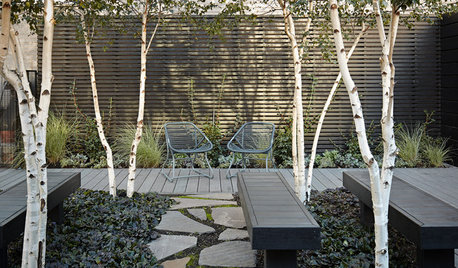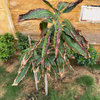Choosing among 9 mangoes trees
abayomi
13 years ago
Related Stories

MATERIALSKitchen Ideas: How to Choose the Perfect Backsplash
Backsplashes not only protect your walls, they also add color, pattern and texture. Find out which material is right for you
Full Story
HOMES AROUND THE WORLD9 Houses That Show Why Wood Is the Material of the Future
Most people may associate wood with traditional homes, but in these innovative, modern structures, its uses are really branching out
Full Story
FARM YOUR YARDIf You Have Room for Only One Fruit Tree ...
Juice up a small garden with one of these easier-care or worth-the-effort fruit trees for a mild climate
Full Story
LANDSCAPE DESIGN5 Ways to Use Trees to Create a Sensational Garden Space
Trees define spaces in multiple ways and bring a layer of shade and intrigue to the landscape
Full Story
SIDE YARD IDEASNarrow Trees for Tight Garden Spaces
Boost interest in a side yard or another space-challenged area with the fragrance and color of these columnar trees
Full Story
FALL GARDENING11 Trees for Brilliant Fall Color
Give your landscape the quintessential look of autumn with the red, orange and yellow leaves of these standouts
Full Story
TREES11 Japanese Maples for Breathtaking Color and Form
With such a wide range to choose from, there’s a beautiful Japanese maple to suit almost any setting
Full Story
LIFE9 Ways to Appreciate Your House Just as It Is
Look on the bright side — or that soothingly dark corner — to feel genuine gratitude for all the comforts of your home
Full Story
LIFEHard Winter? 9 Ways to Battle Cabin Fever
We know a lot of you are trapped where it just won’t stop snowing. Here are some ways to survive
Full Story
MOST POPULAR9 Elegant Examples of Black in the Bath
Don’t be afraid to embrace the dark side with this powerful hue
Full Story






mango_kush
squam256
Related Professionals
New Bedford Landscape Architects & Landscape Designers · Redondo Beach Landscape Architects & Landscape Designers · Waunakee Landscape Architects & Landscape Designers · Allentown Landscape Contractors · Annandale Landscape Contractors · Bridgeport Landscape Contractors · Columbine Landscape Contractors · Farmington Landscape Contractors · Fort Atkinson Landscape Contractors · Golden Gate Landscape Contractors · Indianapolis Landscape Contractors · Lake Zurich Landscape Contractors · North Highlands Landscape Contractors · Waltham Landscape Contractors · Woodbury Landscape Contractorsjsvand5
tropicalgrower89
hmhausman
abayomiOriginal Author
hmhausman
abayomiOriginal Author
hmhausman
abayomiOriginal Author
mangodog
abayomiOriginal Author
hmhausman
squam256
jeffhagen
abayomiOriginal Author